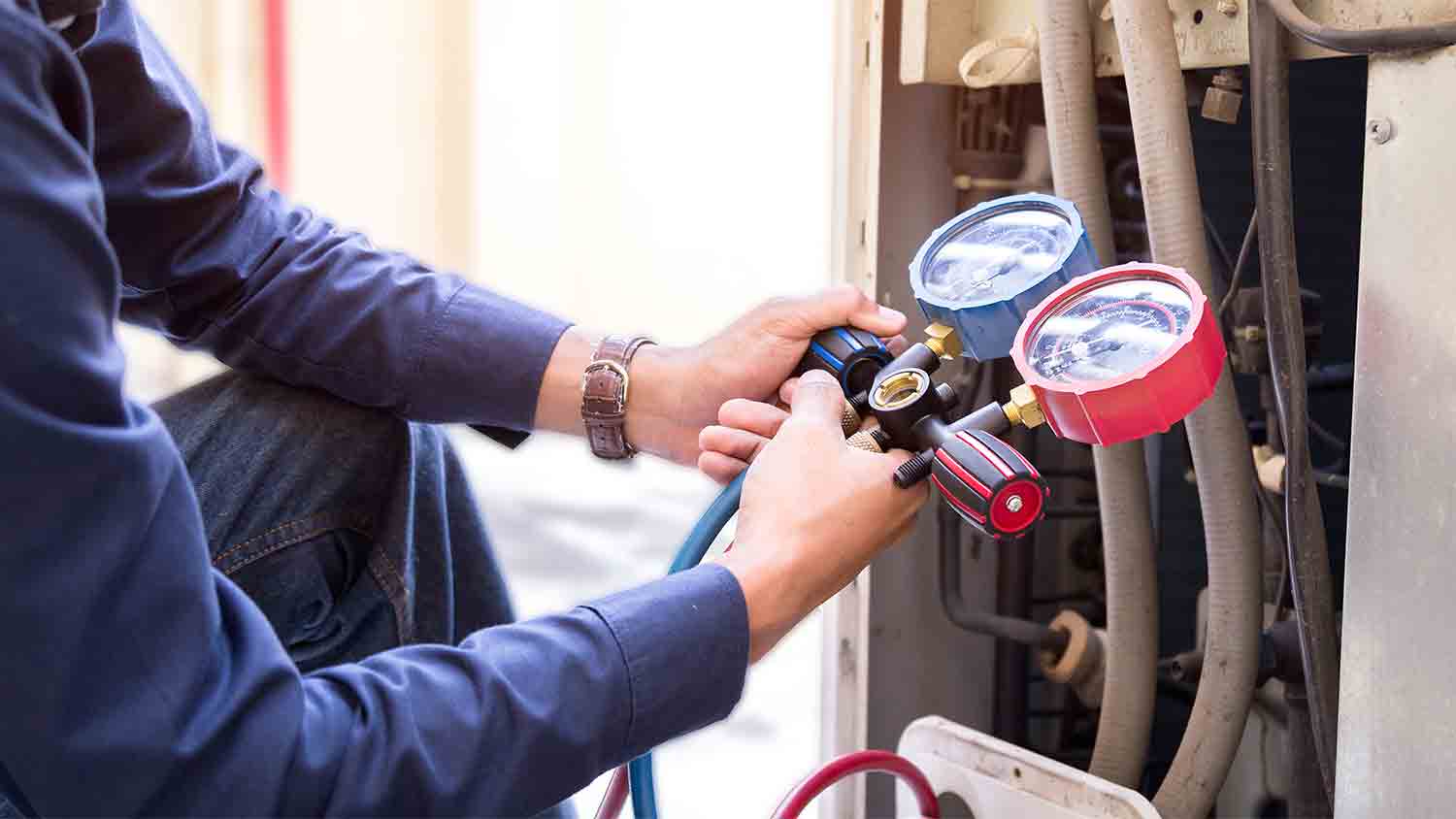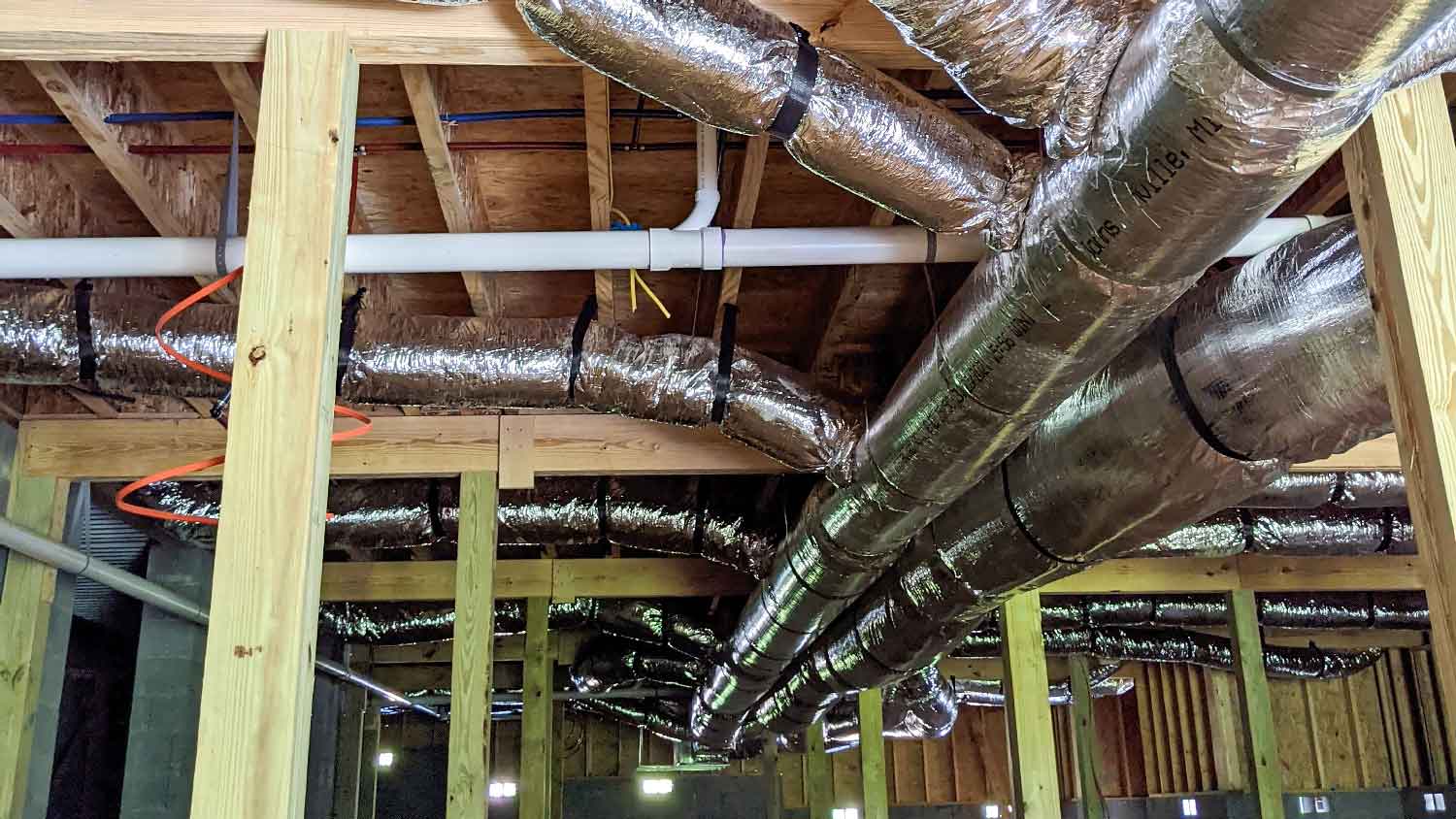
Considering a heat pump to reduce monthly heating and cooling bills? Find out geothermal heat pump costs based on system type, capacity, and other factors.
Geothermal heat pumps are complicated systems, but a few simple steps could help you solve these common problems


Geothermal heating and cooling systems offer homeowners access to significant advantages. Namely, the savings they deliver give homeowners a cost-effective, long-lasting heating and cooling system with considerably low monthly energy costs. However, geothermal heat pumps are much like any other piece of mechanical equipment with moving parts; they can break down from time to time.
And, while regular preventive maintenance is the best way to avoid mechanical failure, even a well-maintained system may experience trouble. In most cases, you should call your geothermal HVAC contractor right away if you encounter problems. At the same time, it's generally safe for homeowners to walk through a list of general heat pump troubleshooting tips before making the call.
The easiest way to troubleshoot your heat pump is to make sure the power is on. Check that the power switches to the indoor and outdoor unit read "on," and then visually inspect the fuses and breakers in the main circuit box that supply power to the system.
If you see any blown fuses, you will need to replace them. An electrician in your area can help you repair any damaged sections of the circuit box.
Once you’ve checked your power switches, the next step is to double-check your thermostat settings. You may think the thermostat settings are correct, but if you don't check them, you may incur a service call charge simply for the contractor to show up at your doorstep and tell you that you set your thermostat incorrectly.
This scenario is more likely for homeowners who just recently installed a geothermal heat pump; the installer may have improperly set the settings. This may be a no-brainer, but if you want to cool your home, you should set it to "cool.” For heating, set it to "heat." In both cases, set the fan switch to "auto," which tells the fan blower to run only if and when the heat pump is running.
The system won't cycle if its temperature setting isn't higher (in winter) or lower (in summer) than the home's current temperature reading. So, the next step involves checking that the temperature setting will trigger the heating or cooling to run.
Set the temperature about 5 degrees Fahrenheit lower than the indoor temperature setting for cooling, then see if that triggers the heat pump to cycle on. In the winter, dial the home's temperature up by about 5 degrees Farhenheit from the home's current temperature reading to trigger the system.
If someone inadvertently closed room registers or damaged the air duct, it will feel less warm or cool—but not because the system isn't working properly. Work your way through each room in the home and check the supply registers, return grilles, and air ducts. Vents should be in the fully "open" position, and you should remove any furniture, drapery, or other objects that may block airflow delivery or return.
At the same time, inspect any spaces where air may be leaking out of the ventilation system, as this can result in a heat pump not working optimally. Repair damaged ducts and check to make sure existing ductwork is properly insulated to maintain appropriate temperatures throughout the system.
A dirty filter may be the culprit if the registers or air ducts aren't responsible for the issues, and airflow still seems less than normal. Just like traditional HVAC systems, when the heat pump's filter surface becomes full, the dirt and debris blocking the media surface prevent air from moving through it. This effectively leads to your system straining and working extra hard just to pump air throughout your home. If this is the cause of the problem, replacing the filter should fix it.
If the above troubleshooting tips don't resolve the problem with your geothermal heat pump, don't hesitate to contact your local contractor for help. The following common issues require a professional to step in and fix your heat pump system.

Much like any system that depends on pressure to operate, a heat pump that loses its pressure charge will no longer maintain the desired temperatures.
Incorrect ground loop pressure can occur for several reasons. For one, the subterranean ground surrounding the loop system can cause the loop to expand in the long run, causing the pressure to fall out of alignment with the recommended manufacturer range. A professional will inspect the area for loop leaks and likely rebalance the loop system using water to resolve this problem.
One telltale sign of a low-pressure problem is a change to the sounds coming from your system. Your heat pump should be relatively quiet once repressurized. If the pump continues to make sounds, you may have a leak, which leads to the next common problem.
Unlike a gasket leak in a traditional water system, if your geothermal heat pump leaks, chances are it won’t show visible water leakage. Instead, heat pumps tend to have a slow leak that’s not so easy to detect but will definitely start to interfere with the efficacy of your system when once too much water escapes.
You need a pro’s keen eye to inspect the above-ground parts of your system to check for these pesky leaks. A professional may also conduct a system pressure check to ensure that the correct amount of water is present in the system. If they find a leak, they will replace the gasket or other machinery responsible for the leak.
Sometimes, it’s the geothermal heat pump itself that stops working. When this happens, both the water that moves through the loop in the ground and the heat from that water no longer can flow through the system.
In some instances, a geothermal professional near you can repair the pump. If your pro is unable to fix it, or if the cost of repairing the pump is comparable to the cost of the geothermal system, then you might need to replace your entire geothermal heat pump.
From average costs to expert advice, get all the answers you need to get your job done.

Considering a heat pump to reduce monthly heating and cooling bills? Find out geothermal heat pump costs based on system type, capacity, and other factors.

Discover the cost to install ductwork. Learn about average prices, cost factors, and tips to save money on your ductwork installation project.

Getting AC and furnace replacement done at the same time can lead to huge benefits for your wallet and your home. Here’s everything you need to know.

There are a few different types of refrigerant for AC systems, but some contain environmental hazards. Learn about the five main types of refrigerant.

Energy bills rising? Here’s how to perform a DIY duct leakage test to locate any damage in your ductwork and restore your energy-efficient home.

Not sure who to hire to install radiant floor heating? Learn which pros handle radiant floor heating installation and how the work comes together.